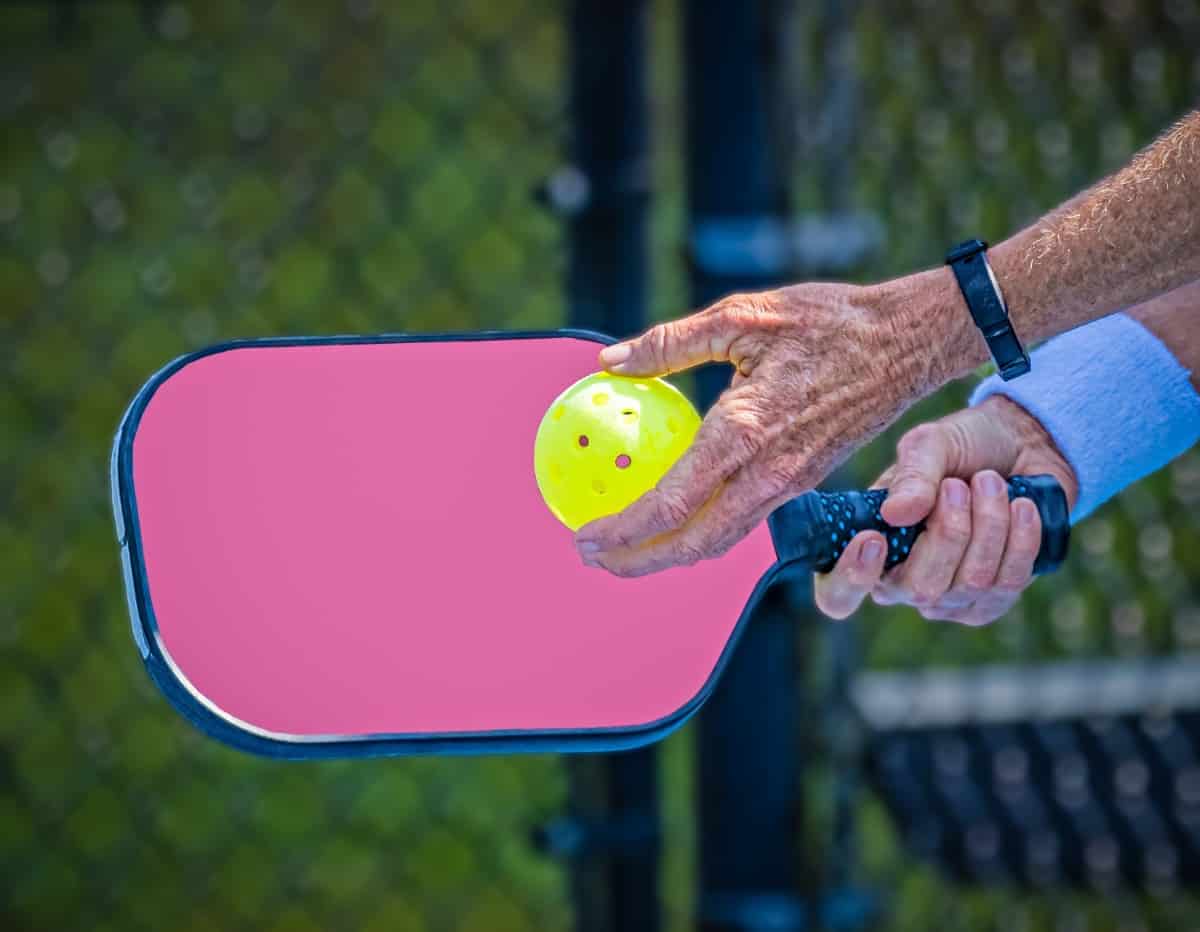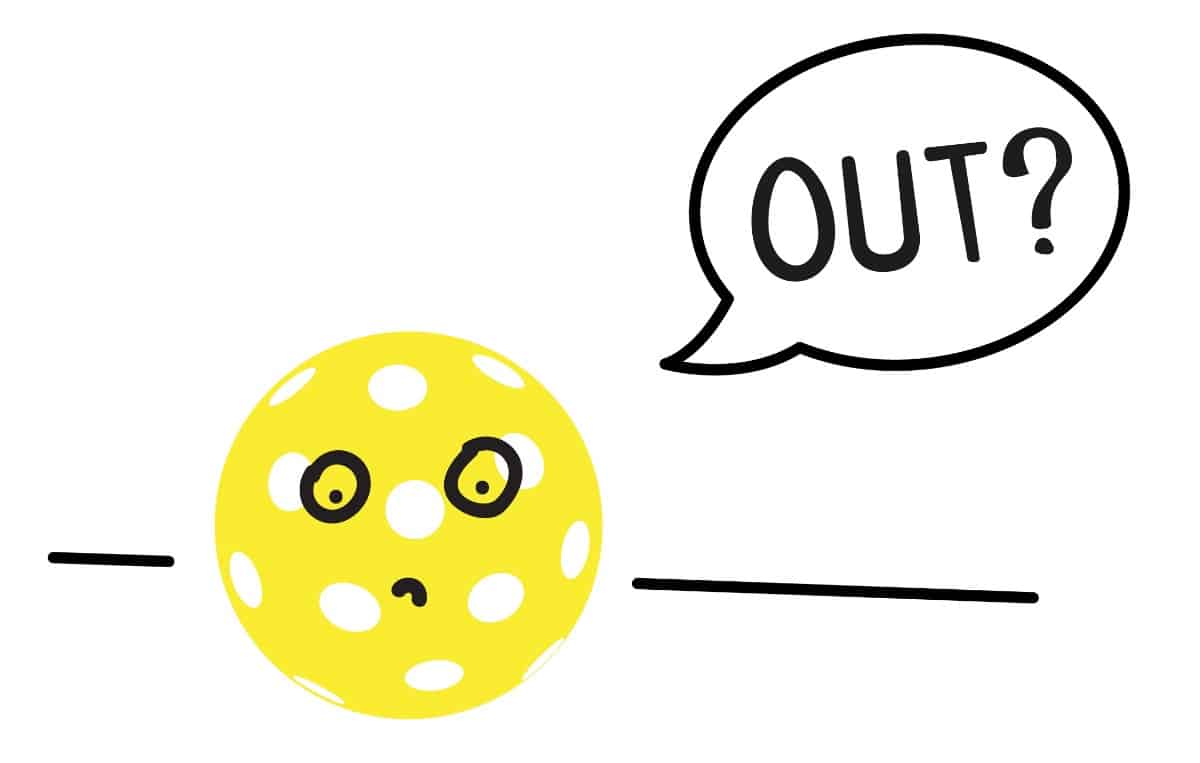
Pickleball is a fun game played by people of all ages. It’s a great way to exercise and maintain an active lifestyle. In addition, it promotes important social and ethical values! Pickleball is played indoors or outdoors, in communities large and small.
When playing doubles, the match starts with the service of the designated team. Player 1 sends the ball to player 1 (opposing team). The service is performed diagonally (crosswise) and the ball must land in the opposite service area.
So, in this example, Player 1 will serve from the right service court (pair) to the opposite service court (receiving team, even court). The serve must be underhand (underhand serve) and only the serving team can score. Each member of the team has the opportunity to score points.
The Court

Pickleball is often played on a badminton court (indoor), a tennis court (outdoors, where lines to mark the pickleball playing area, of a different color, are added) or on a court specially designed for play (i.e. a pickleball court).
The court measures 20 ft 44 ft (6.10 mx 13.41 m) for singles and doubles games (i.e. the outside lines of a badminton court). A pickleball court consists of the following dimensions and lines:
1. End lines: lines at the bottom of the court (baselines)
2. Side lines: lines defining the right end and the left end of the field (sidelines)
3. Median lines: To play the ball touching this surface, you must let the ball bounce (non-volley zone).
4. Non-volley line: line that defines the non-volley zone, which is 7 feet from the net (non-volley zone line).
The Faults
However, after two faults, the service returns to the opposing team (except at the start of the match, where the first team to serve is only allowed one fault before losing the service).
In the example above, player 1 serves for the other team’s player 1, and if a point is scored, player 1 on the first team moves to the odd service court (he and his partner switch places) and serves for player 2 on the other team; odd service court).
Similarly, if player 1 on the first team makes a fault on the service or if his team loses a rally, player 2 on the same team will give the next service (2nd in service) to player 2 on the other team; zone of odd service). To sum up, all serves are done in crossfire and the partners change places only if they score points and stay in their place if they score.
The First Serve

The first serve of a new match is called or 0 0 start (meaning only one fault by the serving team is allowed before losing the serve). Then, the score is called as follows: Assuming the game is currently 3 points for your team and 7 points for the opposing team, and your team serves their first serve, the score will be called (which means your team has 3 points, the opposing team has 7 points, and your team makes its first serve).
Change of Serve
If your team scores a point, you must then call If your team commits a fault, the service goes to your partner (2nd server), and before serving, he will call the score (meaning that it is the 2nd serve of your team). If a fault is committed, the service goes to the opposing team.
As mentioned above, this is called a “change of serve”, which means that the serve goes to the opposing team. In this example, the call before the opponent’s serve will be 7 4 1, and so on.
The Match Points
The game continues until one team has 11 points. On the other hand, since the winning team must also win by 2 points, the match sometimes continues after this mark. Note that the match point is called match 8 1 or match 8 2, depending on the score of the opponent.
Nevertheless, most players call or It is important to remember that the player who serves first (on the even service court; on the right side of the court) is always on the right side of the court when the points are even (0 , 2, 4, 6, 8, 10), and always on the left side of the field when the points are odd (1, 3, 5, 7, 9). And vice versa for his partner.
Scoring the Game

Now, let’s go into the nitty gritty of scoring in the game so you know how to apply it to your game. These scores do not change, no matter how the game is played. The first team that gets to 11 points will win the game, even though, in some tournaments, the score can go to as high as 21.
The only team that can score is the serving team, which is the same thing in tennis. The receiving team must wait their turn to score. Once the serving team scores a point, the ball goes to the other side, even in a singles or doubles game.
The server on the team will continue to serve unless there is a foul committed by the team member. The team serving must win the game with at least 2 points. Therefore, if you are playing for 11 points and both teams are at 10, then to win, the team has to score 2 points back-to-back. The score would then be 10 to 12.
Singles and Doubles

The scores usually change, depending on the team serving at any given time. For that reason, the server must call the score prior to serving in a doubles match. If it is a singles game, there are two numbers. One is the score of the server and the other is the score of the receiver.
The doubles game is a team score for the receiving team and a server score for the serving team. The serving team calls out the first score. If the score is not called out in a tournament, it could be deemed a foul. If the fist server on a team is positioned on the right, the score is always equal.
Double Score
Once you book for the tournament, it is important to call the score, for your team, the opposing team and determine if you are either the first or second server for your team. When the game begins, the second server on the point will initiate the serve once it is a 0-0-2 score. Why is this done?
It restricts the first set of serves to only one server. This minimizes the benefit of being able to be the first server. The server continues serving as long as the team is acquiring points.
When the first server loses the rally, the other team begins their serve. The server on the right of that team will start serving.
Team Loss

When a team loses serve because one player loses a point, this is known as ‘side out.’ At this point, the doubles team remains on their side of the court if they are the home team.
For this serve, the server number becomes relevant and so when a team gets the serve from this point, it means that any team member on the right side receiving the serve will become the first server. This is very important to note. The server number changes when a team starts serving.
The Beginning of Play

Once the play begins, the server located on the right begins serving across the net diagonally to the receiving player on the other team. Every time that the serving teams score, the players from that team make a switch of positions.
They only change their positions when a point is scored. The receiving team cannot change positions. The player will continue to serve on either side of the court until a rally is lost. The serve will then go to the second server and vice versa for the other team.
Conclusion
It is important to note that the skill level and skill of each player will determine if it is a friendly game or a competitive game in a tournament. Some players will just want to know the basic rules and play.
However, new games bring new challenges, and players who are trying to improve their gaming skills and understand how the game plays at the next level will want to play competitively. You can find out what suits you best!
As in any sport, it is important to know all aspects of the game so you can play better. The scoring rules are also significant, so you understand how to play the game efficiently.

